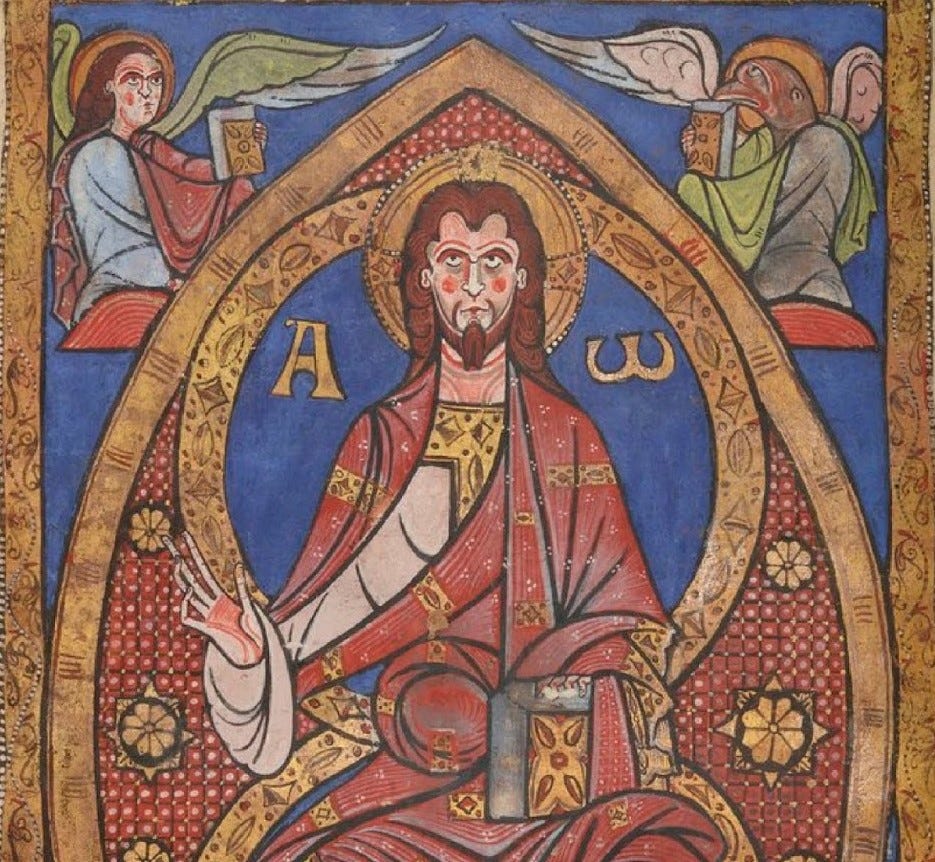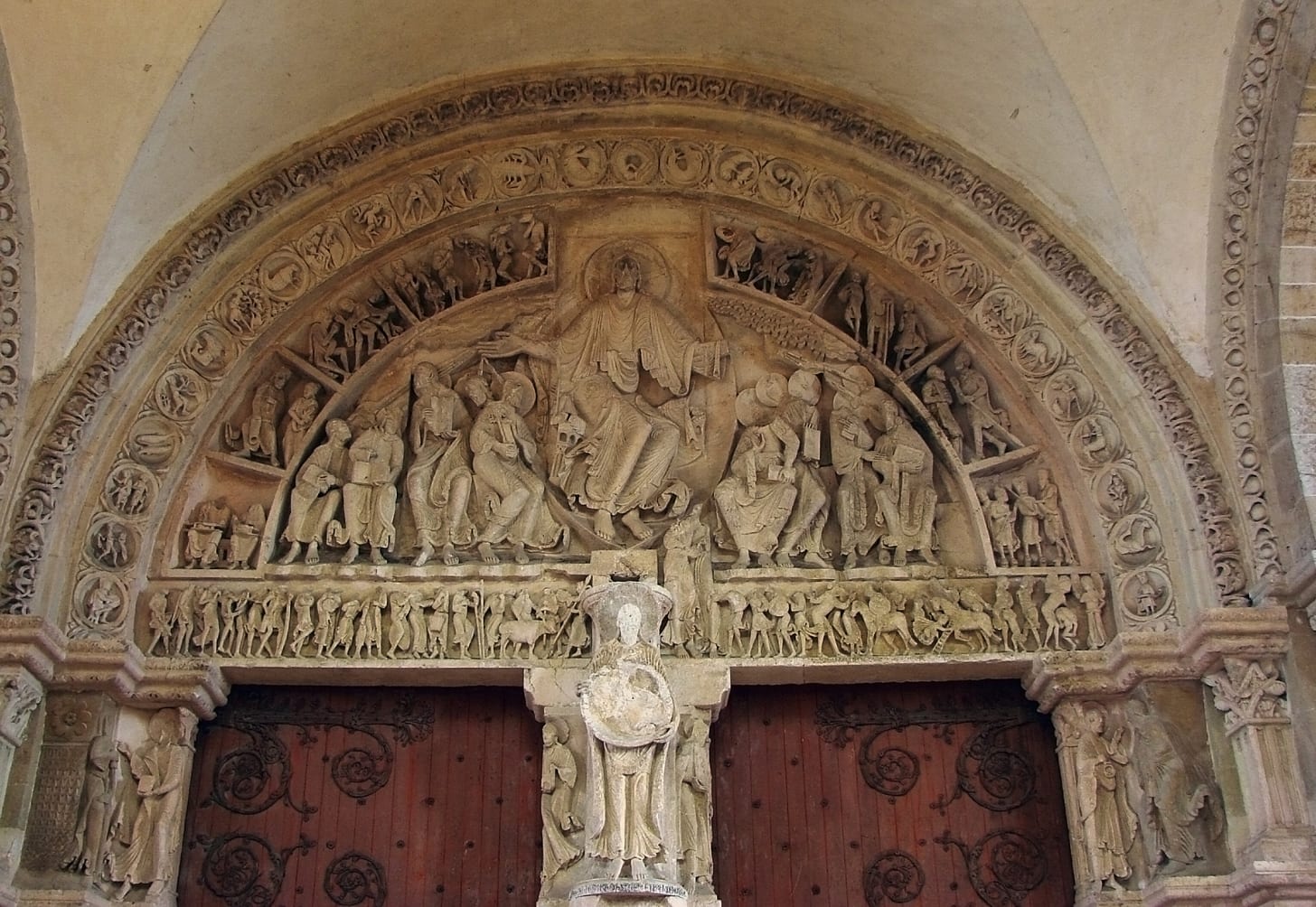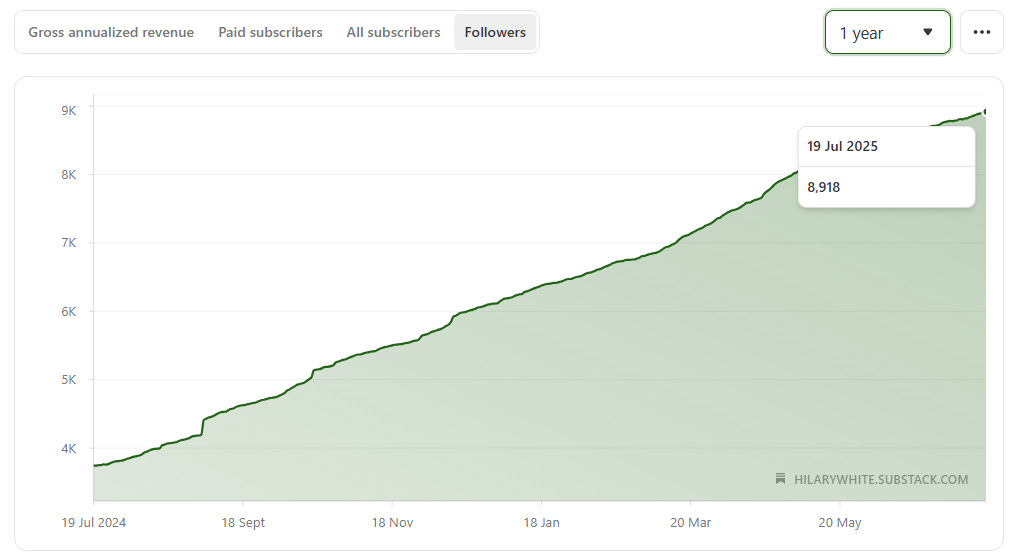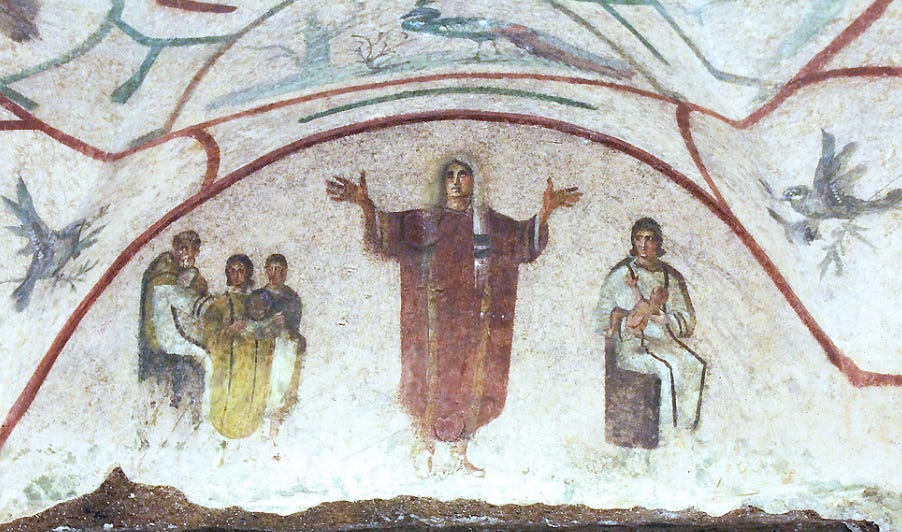Why subscribe? To join in on a work of restoration
From the Sacred Images Project to the Ars Sacra Association
Starting the 3rd Quarter of 2025 - Romanesque and the Middle Ages
I thought that, having come to the end of the second quarter of our Big Editorial Plan for 2025, and about to launch into the glories of the Romanesque and the Age of Faith, it might be a good time to give a summary of where we are, how we’re doing, what’s going on and where we’re going next.
If you’ve read me a while, you’ll know I’m really keen on Romanesque art. In previous years we touched on some of it, and we’ll be diving into some of the deeper aspects over the next few months:
Romanesque architecture and sculpture
Cluny and the art of monastic reform
Apse frescoes and the concept of the “cosmic” Christ
Manuscript art
Pilgrimage routes and portal symbolism
Romanesque painted Madonnas and crucifixes
How the Gothic style begins to emerge
At the same time, we’ll be looking at the expansion of Byzantine Christianity into Russia, the growth of the Church in Anatolia and Georgia, and the British Isles, as well as the conversion of the peoples of Scandinavia. There’s lots to do.
Videos coming
Here’s a little test sample of the kind of video work I’m hoping we’ll be able to do a lot more of going forward. These were some clips I took on a trip in February 2024 to the Cripta San Magno, an 12th century chapel of the ancient cathedral church of Anagni outside Rome decorated in a schema of incredible Romanesque frescos, all edited together by our new video editor. She will be helping us produce more material of this kind and setting up our YouTube channel. (And I’ll be working on making better clips.)
Some stats and updates
We’re doing really well, as a project, and that’s because of you. I know people have been subscribing and following, but they’ve also been passing the material around to others who might be interested. I’m so chuffed that interest and enthusiasm is growing.
I’ve published a total of 269 posts to this publication since starting in April 2021. At that time it was just a personal blog to help friends and family keep up with my move to Narni, and a place for me to talk about some of the weird goings-on in the world. Since starting the work in earnest in June 2022, and then changing the name and purpose to The Sacred Images Project, we’ve done about 230 articles. We’ll talk below about the upcoming ebook, but my friend who is working on it said that she downloaded only the posts from the first quarter of 2025, and it came to nearly 350 pages! So I think we can say that we’ve got a good base of work to build on.
It’s become something of an archive already, a resource for readers, researchers and educators that is starting to pop up regularly in my own Google searches. And it’s not slowing down. If anything, we’re only now hitting our stride.
And our growth in readership has been simply amazing. I was looking at the stats for the last year and could hardly believe it, and I thought readers deserved to know where we are. Free subscribers have gone up (in this slow season) by 86 in the last 30 days. If you put together paid and free subscribers, plus “followers” on the Substack platform itself1, we’ve gone in a single year from 3,744 to a mind-boggling 8,918 today.
In other words, the community has more than doubled, and that seems to me very reassuring, proof that there’s a real hunger out there for beauty, depth of meaning and the recovery of the great Christian visual sacred tradition.
If you’re receiving the free edition, you have access to the free post each week which is usually a shorter, image-based reflection or a companion piece to the longer and more in-depth weekly paid essay. In addition, some of the extra posts, and our occasional guest spots for the Christian spirituality section are also available to free subscribers.
Read the most popular of our “Philokalia” section:
But here’s my worry: paid subscriptions aren’t growing at anything like the same rate. In fact, compared to the incredible increases in free and “follows” it’s looking pretty plateau-ed, and stuck at under 5% growth.
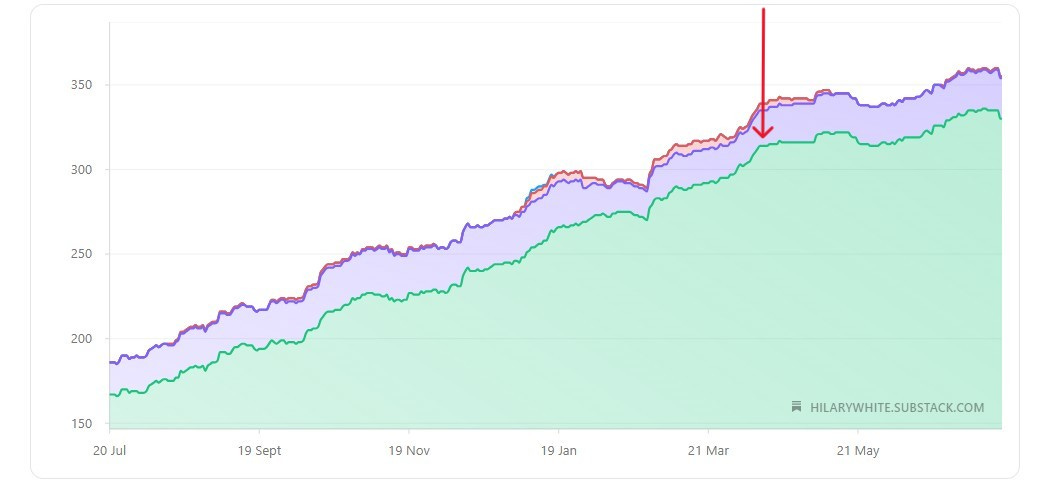
Which is odd, in a way, because the material is clearly getting a lot of interest; people are really seeing the value of what we’re doing. The reach is expanding, the feedback is positive and very engaged, and yet the numbers ready to commit to something more hasn’t really kept pace. I know times are tight, and obviously not everyone can swing a subscription, but if you can, and if you’ve found this work meaningful, helpful or encouraging, I hope you’ll consider helping us keep it going, and expanding.
If you’d prefer to set up a monthly donation in an amount of your choice, or make a one-off donation to the work, you can do that at the studio blog here:
If you set up a recurring monthly donation above $9/month, I will manually add you to the complimentary subscription list here for a year, which means you’ll have all the benefits of a paid subscription.
What we’ve learned together, and why it’s time to build
Over the past 18 months, since turning on paid memberships, The Sacred Images Project has grown into something much larger than a blog. When I started, I said that I am a student, not an expert, and what I was doing here was sharing the things I’ve devoted my life to studying. This is why I’ve always thought of it as a cooperative effort.
And it’s been a busy half year. Together, we’ve explored the concept of a visual theological language, the motifs and symbols of the early Church: fish, orants, peacocks, anchors and vines in the catacombs, as statements of theological meaning and hope under state persecution. And we went through what happened next in that incredibly packed brief span of years. We traced the end of the final Roman persecution and the miraculous conversion of the Roman Empire to Christianity, and the start of the grand imperial basilicas and mosaics.
Second Quarter highlights:
– the solemn Hodegetria Madonnas of Constantinople into Italy’s Italo-Byzantine panels and grand mosaics
– the purple pages of the Codex Purpureus Rossanensis to the vivid eschatology of the 1047 Beatus manuscript
– From Syrian monks fleeing Iconoclasm to frescoes in hidden country chapels in Lombard Italy…
We’ve been to 6th century Egypt, and Visigothic Spain, watched as Islam surged out of the Arabian desert to conquer half the Christian world, and seen how a culture can turn on itself out of fear.
The project is expanding
Books
Our first e-book is in production, with a professional editor shaping it from the first quarter of this year’s output. The book will be something unique: a kind of hybrid of history, textbook, guide and philosophical manifesto on sacred art, designed for home-schoolers, catechists and self-directed learners. I hope it will help you to begin to go deeper into the great spiritual mysteries of Christian art.
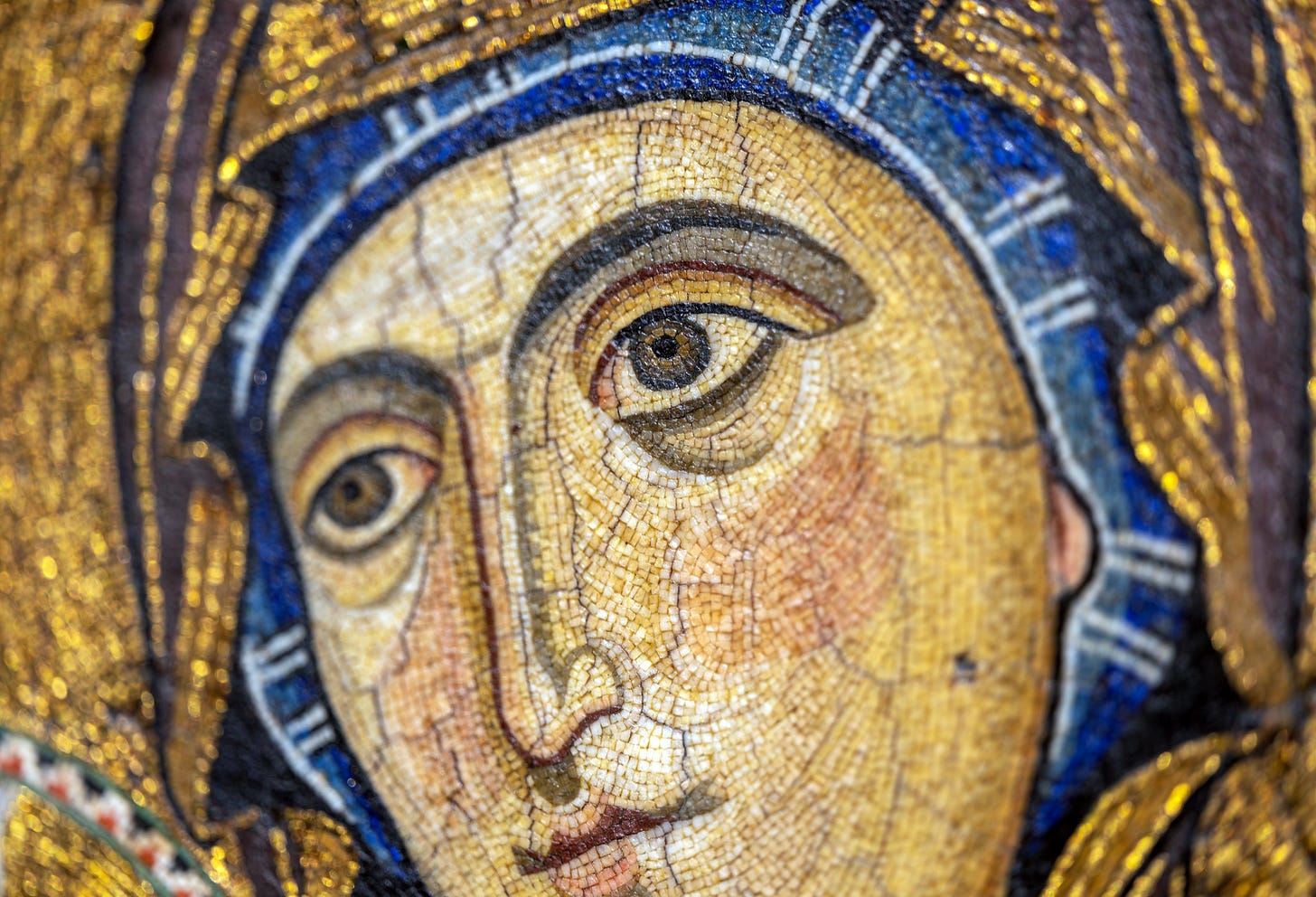
Videos
We’ve also engaged a professional video editor who will help set up the YouTube channel. The first video is now in production, a voiceover with images on the meaning and history of the Hodegetria iconographic prototype, “Where did the ‘Madonna and Child’ paintings come from?” More videos will follow, bringing our material into visual media for a broader audience.
Tours
In the longer term, I’m in discussion with an experienced tour operator to set up in-person tours, aiming for starting in 2026, with a sacred art tour of early medieval Christian sites in central Italy.
A legal non-profit Cultural Association: Ars Sacra
Most important for all these and more future plans, is the establishment of the legal non-profit organisation. We’re finalising the paperwork that will transform The Sacred Images Project from just a blog on Substack into the Ars Sacra Cultural Association, legally registered as a nonprofit under Italian law.
This marks the beginning of a new phase. It means more than just publishing articles, we’ll be building a formal structure that will allow us to grow into a full-fledged platform for teaching, preserving, and promoting the Christian sacred visual tradition.
With this legal foundation in place, we’ll be able to develop educational resources, publish books, run workshops and tours, offer online courses, host exhibitions, and collaborate with other institutions, while staying rooted in the vision that brought us here: to recover and share the richness of sacred art as part of a living Christian culture, an authentic spiritual tradition.
In short: the blog was the beginning. Now we build.
I hope you’ll stick with us, and if you’re able, subscribe as a paid member. Annual subscribers2 will be eligible for automatic membership in Ars Sacra once registration is finalised, giving you access not only to all paid content, but also to future member-exclusive materials, downloadable resources, access to courses and video content, and priority booking and discounts for events like workshops and sacred art tours.
More importantly, you’ll be directly supporting the ongoing effort to restore, preserve and teach the ancient Christian sacred tradition, a genuine participation in something we hope will last.
For those who only get our material via the emails, these articles are all being produced on a platform called Substack that allows writers and other kinds of creators to set up publications that send their work to a subscriber list via email. But Substack also has a “home” page that is a bit like Facebook, maybe Facebook for people who read. There you can follow a lot of different writers, including lots of people who do similar stuff to what we’re doing here. You can also see the “Notes” we publish on there - short posts, usually with images or video clips - in much the same way you’d see posts to Facebook. Following on Substack is a good way to scratch the social media itch, find related stuff to read, and even a community of like-minded other readers and writers. Each post is automatically re-published there with a link to our site, so you can share and link to it yourself as a reader to find other readers. Everyone who uses the Substack page says the same thing: it’s like social media without being horrible. There’s no arguing or fighting or any of the usual mayhem you find on Twitter, and it isn’t a swamp of fake AI generated content and bots like Facebook has become. Just people who write and draw and paint, photograph and travel, and take an interest in things. Check it out here.
Membership in the association will be restricted to annual, not monthly, subscriptions.


